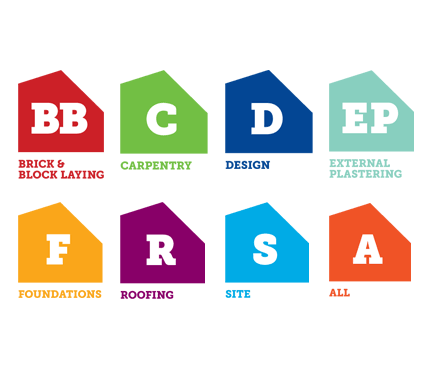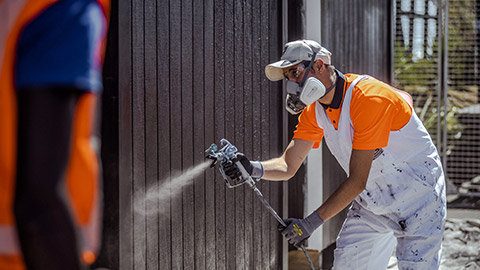Our aim in this module is to:
- Identify how the LBP scheme is affecting the roles and responsibilities of key parties involved in a building process.
What is the Licensed Building Practitioner scheme?
The Licensed Building Practitioner (LBP) scheme is a critical element of building compliance in New Zealand.
The scheme is designed to ensure that those performing or supervising restricted building work have the necessary skills, qualifications, and experience in their specified field, contributing to compliance with building standards and regulations.
LBP status is important in maintaining building compliance as it verifies the competency of individuals involved in crucial building work, reinforcing quality, safety, and professionalism within the construction industry.
Who regulates the scheme?
The Licensed Building Practitioners (LBP) scheme is regulated and overseen by the Ministry of Business, Innovation, and Employment (MBIE) in New Zealand.
Its ongoing main role and responsibility is to develop regulations and issue guidance information.
MBIE achieves this in a partnership with The Building Practitioner’s Board, an independent body within the MBIE network whose job is to govern and oversee the LBP scheme.
While the Ministry of Business, Innovation & Employment (MBIE) administers the day-to-day running of the scheme, this Practitioner’s board conducts several key functions, such as:
- Approving the rules related to the Licenced Building Practitioner scheme.
- Dealing with complaints about the LBPs and any discipline procedures with the LBPs if necessary.
- Hearing appeals against certain decisions of the registrar.
How are LBPs identified?
Example of an LBP Card Identification from buildmagazine
The LBP Scheme provides a register for people to find LBPs or confirm the person they have engaged for particular work is an LBP with the appropriate licence class or classes. In order to be listed, the trade (practitioner) will be issued a licence card with their photo published from the LBP register.
You can also provide assurance to your clients by informing them of the validity of your registration by directing them to the LBP - Find an LBP - search page.
Congratulations if you are already a registered LBP holder!
Otherwise, if you're considering becoming an LBP registered practitioner, application guidelines can be found on the LBP - Apply for licensing page.
Importance of the LBP scheme
The Licensed Building Practitioner (LBP) scheme in New Zealand is essential and required for specific building-related trades or professions for several reasons:
- Quality assurance: LBP status ensures that individuals carrying out or overseeing restricted building work have the necessary skills, qualifications, and knowledge in their designated field, thereby ensuring a certain level of competence in the building industry.
- Compliance with regulations: It helps ensure compliance with the Building Code and relevant regulations by ensuring that those involved in critical building or construction work meet established standards.
- Consumer protection: The scheme provides a level of assurance that the building work performed by an LBP complies with industry standards, enhancing consumer confidence and protection.
- Safety and professionalism: It contributes to maintaining high safety and professional standards within the construction industry, benefiting workers and end-users of buildings or structures.
- Accountability and trust: LBP status holds individuals accountable for their work, enhancing accountability and trust within the construction sector and promoting integrity and professionalism in the industry.
Different LBP licence classes
The scheme consists of seven licensing classes, some of which are divided into three different building categories, each based on specific roles or occupations that are critical to a building's performance.
Branz has encapsulated what these categories involve:
- Category 1 – simple form masonry or timber-framed houses or two-unit flats/ townhouses with low-risk design.
- Category 2 – more complex, from houses to moderate-sized multi-use buildings. Non-residential buildings must be three storeys or less and have less than 500 persons at ground level, 250 persons at level 1 and 100 at level 3.
- Category 3 – other buildings, including those with sleeping accommodation for more than 50 persons at ground level or 25 persons at higher levels. Hazardous goods industrial buildings, post-disaster recovery buildings, and other special-use buildings.
Following on from the categories, the licence classes represent broad types of work that a person is competent and licensed to undertake. LBPs must not carry out or supervise Restricted Building Work outside their licensing class. You can apply to be licensed in more than one licence, but you must be able to demonstrate that you are competent in each class you apply for.

The different licence classes under this scheme include a number of key people and trades.
These various tradespeople all need to have the appropriate licences to carry out their work. The licence classes are:
- Design (Design 1, 2 and 3 areas of practice)
- Site (Site 1, 2 and 3 areas of practice)
- Carpentry
- External plastering
- Bricklaying and block-laying
- Roofing
- Foundations
What are the minimum standards for licensing?
Standards for each licence class set out minimum requirements, such as knowledge, experience or skill that you need to be an LBP.
The standards are set out in the “Licensed Building Practitioner Rules 2007” as minimum competencies.
These standards are used to assess whether applicants should be licensed or should remain licensed. If an LBP does not keep their skills and knowledge up-to-date to continue to meet applicable standards for licensing, the registrar must suspend their licence.

Are all registered practitioners LBP holders?
Registered professionals in the construction industry may or may not be Licensed Building Practitioners (LBPs).
Registration in the industry refers to professionals being listed or recognised within a specific professional association or regulatory body, often based on their qualifications, training, or certifications.
Licensed Building Practitioners (LBPs) are a specific group of registered professionals under New Zealand law specialising in certain building work categories.
- not all registered professionals in the construction industry hold an LBP license
- not all LBP holders necessarily fall under other forms of professional registration
While LBP status is a form of registration specific to building and construction work, other professionals within the industry may be registered in different professional categories or associations.
LBP holders represent a subset of the broader category of registered professionals in the construction sector, focusing on specific building work with specialised certification and licensing.
Some trades require a specific license to perform their trade. The trades that commonly require licensing include:
- Electrical Work: Electricians must hold an Electrical Workers Registration to perform electrical installations and repairs.
- Plumbing and Gasfitting: Plumbers and gasfitters require a Practicing Licence to carry out plumbing and gasfitting work.
- Building and Construction: Licensed Building Practitioners (LBPs) need to have specialised licenses to conduct particular building work, such as carpentry, roofing, design, or on-site building activities.

Here are some examples of registered professionals who are not Licensed Building Practitioners (LBPs):
- Architects: Registered architects specialise in designing buildings and are often not required to hold LBP licenses unless directly involved in the construction or supervision of building work.
- Civil Engineers: These professionals focus on designing and overseeing infrastructure projects and may not require LBP licensing for their specific field of work.
- Project Managers: These professionals oversee and manage construction projects but are generally not required to hold LBP licenses unless directly involved in construction tasks.
- Quantity Surveyors: These individuals manage costs related to construction projects and aren't typically required to obtain LBP licenses.
- Health and Safety Officers: Responsible for ensuring safety compliance on construction sites, they usually don't require LBP licenses unless involved in direct building work.
When will a practitioner require an LBP?
Typically, practitioners need a Licensed Building Practitioner (LBP) designation if they are directly involved in or oversee specific building or construction tasks that fall within the scope of the LBP scheme in New Zealand.
While not all practitioners are automatically LBP holders, they might need an LBP designation if their responsibilities involve certain types of construction-related tasks, such as:
- Overseeing or directly engaging in building or construction work covered under LBP licensing categories (e.g., design, on-site work).
- Providing structural design related to the structural integrity of buildings, directly influencing a building's compliance with the Building Code.
- Undertake or supervise design or building tasks that fall within the specific categories designated under the LBP scheme (e.g., aspects directly related to the Design LBP category).
Therefore, whether practitioners need LBP status depends on the specific nature of their work and the extent to which it involves tasks covered under the LBP scheme's categories.
Who are non-registered practitioners?

Some people working on a construction project are not subject to any licensing or registration schemes. These team members are only required to do what their contract specifies.
Currently, the trades not registered through the LBP Scheme are:
- painters
- tilers
- plasterboard stoppers
The following is a question set of 3 for you to complete.
Consultants
Depending on the work conducted in the project build, consultants with their specialist skills may be needed for the consent process.
Consultants are also responsible to their clients and to any other relevant professional boards, like the New Zealand Registered Architects Board, Chartered Professional Engineers Board or the Building Practitioners Board.
In New Zealand, certain trades are not mandated to hold a Licensed Building Practitioner (LBP) status. While the LBP scheme applies to specific building work and trades, professions such as the following generally do not require an LBP license:
- Architects: They design and plan buildings but may not be required to hold an LBP unless directly involved in construction or certain restricted building work.
- Engineers (Non-Structural): Engineers working on non-structural aspects, such as electrical, environmental, or civil engineering, might not need an LBP unless involved in construction work covered by the scheme.
- Project Managers: They supervise construction projects but might not need an LBP unless directly involved in the building or construction work.
- Surveyors: These professionals typically don't require an LBP for their surveying work.
- Health and Safety Officers: Responsible for safety compliance on construction sites but generally do not need an LBP unless engaged in specific building tasks covered by the scheme.
Reading
If you are keen to learn more about the LBP scheme, spend some time reading through this handbook - LBP HANDBOOK.
That's the end of module five. Let's hear a summary of what we've covered so far.
Click 'Video Transcript' or the plus icon (+) to expand and reveal the transcript for the previous video.
Great work there, I know. It was a lot to cover! I know the diagrams take a few passes to help give a good visual representation though of how the roles stack, or what the compliance paths are, but by now it should be all starting to make sense! So keep at it, if you’ve made it this far already, you’re doing good, and I’ll see you at the intro of your next module!
